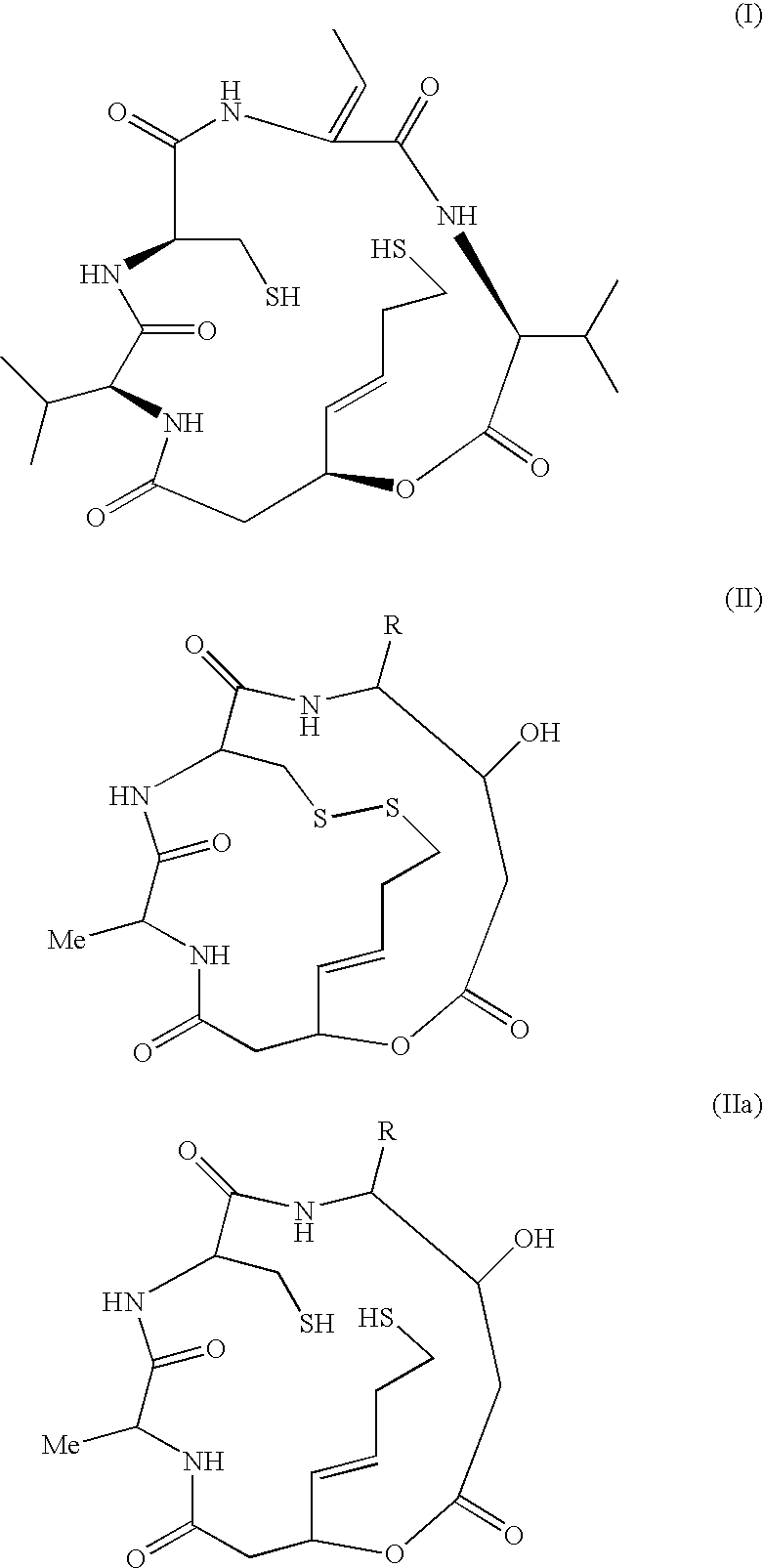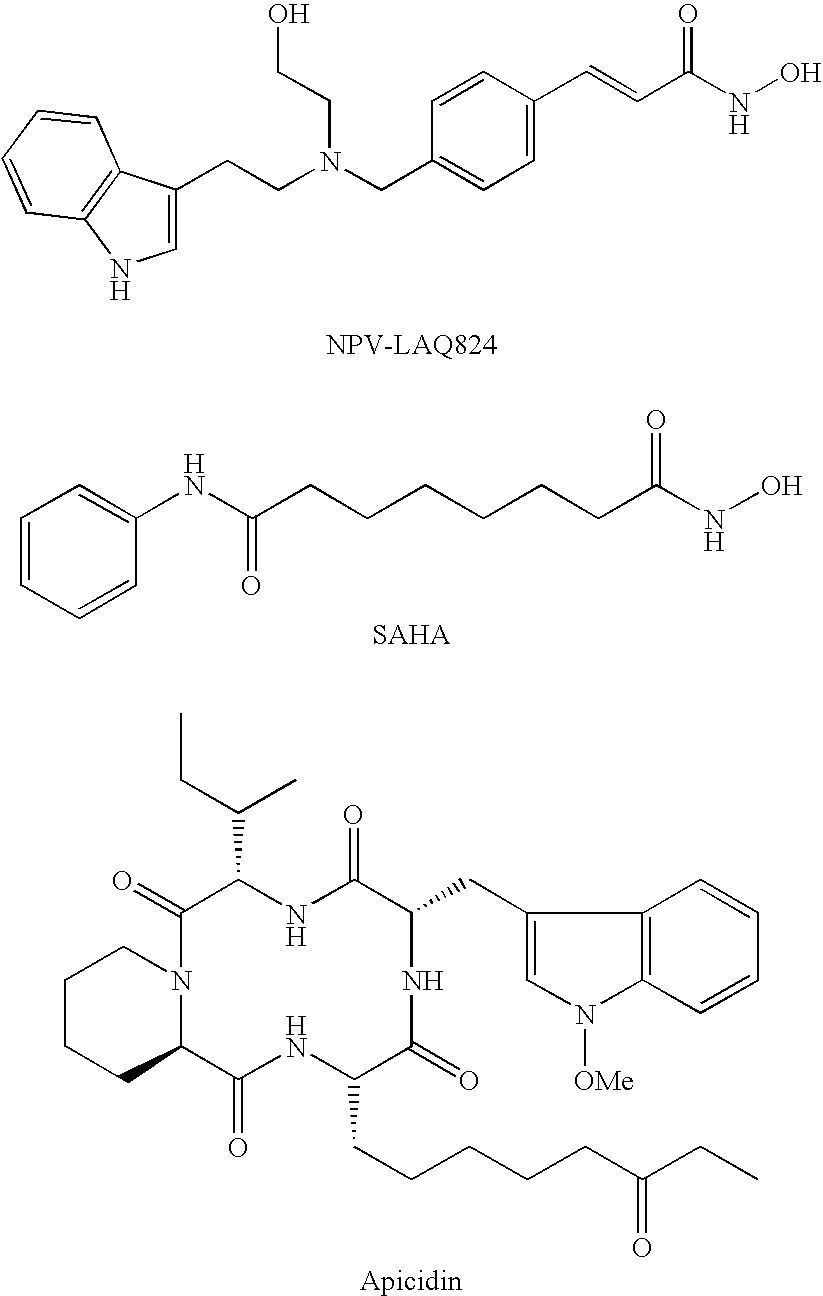Arthrodial cartilage extracellular matrix degradation inhibitor
a technology of extracellular matrix and arthrodial cartilage, which is applied in the direction of biocide, drug composition, peptide/protein ingredients, etc., can solve the problems of insufficient therapeutic effect and destruction of cartilage tissue, and achieve good inhibitory activity
- Summary
- Abstract
- Description
- Claims
- Application Information
AI Technical Summary
Benefits of technology
Problems solved by technology
Method used
Image
Examples
example 1
Proteoglycan (PG) Destruction Inhibitory Activity in Rabbit Cartilage Primary Culture Cell (Stimulation with Retinoic Acid)
(Test Method)
[0057] After a rabbit (Japanese white race, male, 1.0 to 1.5 kg) was killed under excessive anesthesia, the knee joint was taken out and the cartilage layer on the articular surface was abraded and cut finely. Furthermore, after 1 hour of treatment with trypsin-EDTA (0.25%-1 mM; manufactured by GIBCO-BRL) at 37° C., the cut layer was centrifuged at 1500 rpm for 5 minutes and precipitated cells were washed with Dulbecco's modified eagle medium (DMEM, manufactured by GIBCO-BRL). Subsequently, after the layer was treated with collagenase A (0.15%; manufactured by Boehringer Mannheim) / DMEM at 37° C. for 3 to 12 hours, a fraction passed through a nylon mesh filter (100 μm, manufactured by Falcon) was centrifuged at 1,500 rpm for 5 minutes to precipitate cartilage cells. After washing the cells with DMEM / 10% FBS medium, the cells were suspended in DMEM...
example 2
PG Destruction Inhibitory Activity in Rabbit Cartilage Primary Culture Cell (Stimulation with IL-1)
(Test Method)
[0059] In the same manner as in Example 1, rabbit cartilage primary culture cells were prepared. They were stimulated with human IL-1β (manufactured by R&D System) of a final concentration of 10 ng / ml. A culture supernatant after 48 hours was recovered in an each amount of 20 μl and radioactivity was measured using Topcount (manufactured by Packard). The test compound was added simultaneously with the start of the stimulation and a PG degradation inhibitory activity was calculated as percentage where a group to which IL-1 was not added was defined as 100% and a group to which IL-1 was added was defined as 0%.
(Results)
[0060] The results are shown in the following Table 2. It was revealed that each HDAC-inhibiting compound which are test compounds inhibited PG degradation in the concentration range where the HDAC inhibition was shown.
TABLE 2PG degradationTest compoun...
PUM
| Property | Measurement | Unit |
|---|---|---|
| concentration | aaaaa | aaaaa |
| morphology | aaaaa | aaaaa |
| temperature | aaaaa | aaaaa |
Abstract
Description
Claims
Application Information
 Login to View More
Login to View More - R&D
- Intellectual Property
- Life Sciences
- Materials
- Tech Scout
- Unparalleled Data Quality
- Higher Quality Content
- 60% Fewer Hallucinations
Browse by: Latest US Patents, China's latest patents, Technical Efficacy Thesaurus, Application Domain, Technology Topic, Popular Technical Reports.
© 2025 PatSnap. All rights reserved.Legal|Privacy policy|Modern Slavery Act Transparency Statement|Sitemap|About US| Contact US: help@patsnap.com



